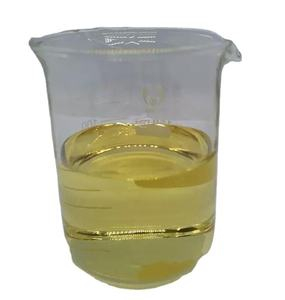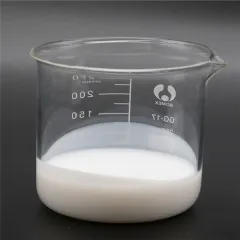Intro to Surfactants
Surfactants, or surface-active agents, are compounds that lower the surface tension in between 2 fluids, a gas and a fluid, or a fluid and a strong. They play an essential function in different industries, from cleansing items to drugs. Understanding surfactants’ homes and applications can unlock new opportunities for technology and performance.
(Surfactants)
Sorts of Surfactants and Their Differences
Anionic Surfactants
Anionic surfactants bring an adverse cost on their hydrophilic end. This type is recognized for its superb detergency and frothing residential properties. Usual instances include sodium lauryl sulfate (SLS) and sodium laureth sulfate (SLES), extensively used in hair shampoos and detergents. Their efficiency at removing oils and dirt makes them prominent in cleaning items. Nonetheless, they can be annoying to the skin and eyes.
Cationic Surfactants
Cationic surfactants have a positive fee on their hydrophilic end. They are much less common in cleaning items as a result of their limited capacity to eliminate dirt. Rather, cationic surfactants are valued for their antimicrobial buildings and are commonly located in material softeners and conditioners. Examples include benzalkonium chloride and cetrimonium bromide.
Nonionic Surfactants
Nonionic surfactants do not have an electrical cost. They are versatile and secure in both acidic and alkaline environments. These surfactants are typically utilized in house and commercial cleaners as a result of their great solubilizing and emulsifying residential properties. Examples include alcohol ethoxylates and alkylphenol ethoxylates. They are also used in the food market as emulsifiers.
Amphoteric Surfactants
Amphoteric surfactants possess both favorable and negative costs, making them conscious pH modifications. At low pH degrees, they act like cationic surfactants, while at high pH degrees, they behave like anionic surfactants. This flexibility makes them mild and effective in individual treatment products such as baby hair shampoos and face cleansers. Examples include cocamidopropyl betaine and lauriminodipropionate.
Applications Across Different Sectors
Surfactants discover applications in numerous fields due to their unique homes. In the cleaning market, they improve the removal of dirt and oils, making them important in cleaning agents and soaps. Individual treatment items take advantage of surfactants’ cleansing and conditioning homes, providing customers with reliable skincare options. The fabric industry uses surfactants for coloring and finishing fabrics, ensuring lively colors and soft structures. Additionally, surfactants are critical in the oil and gas field, where they enhance the healing of crude oil by decreasing interfacial tension between oil and water. Each market gain from the convenience and performance-enhancing abilities of surfactants.
( Surfactants)
Market Patterns and Development Drivers
The demand for surfactants is enhancing as brand-new applications are found. Advancements in making processes enhance top quality and lower costs. Checking guarantees products carry out as anticipated, creating much better items. Firms embracing these technologies use higher-quality surfactants. Customer awareness concerning the advantages of even more efficient and eco-friendly products drives interest in those utilizing sophisticated surfactants. Advertising and marketing initiatives concentrate on educating customers about the benefits of these ingenious surfactants, such as boosted efficiency and reduced ecological influence.
Difficulties and Limitations
One obstacle with surfactants is their possible ecological effect. Some types, especially non-biodegradable surfactants, can build up in ecosystems, leading to air pollution. One more issue is cost. Premium, environmentally friendly surfactants can be costly. Nevertheless, the benefits typically exceed the prices. Products made with sophisticated surfactants last much longer and carry out far better. Firms should demonstrate the worth of these surfactants to justify the price. Safety issues likewise exist, as improper handling or issues can bring about health threats. Study remains to make sure safe use. Clear interaction regarding safety develops trust fund.
Future Potential Customers: Advancements and Opportunities
The future looks promising for surfactants. Extra research study will discover means to improve their performance and minimize ecological influence. Technologies such as bio-based and naturally degradable surfactants intend to boost sustainability while preserving stability and performance. As sectors look for greener and a lot more effective remedies, surfactants will play a key duty. Their capability to give reputable and functional efficiency makes them useful. New developments might open extra applications. The possibility for growth in numerous fields is considerable.
End of Document
This short article provides a thorough yet simple exploration of surfactants, highlighting their significance throughout different markets. Each section concentrates on certain elements of surfactants, making certain clearness and ease of recognizing while preserving depth and expertise.
Supplier
TRUNNANO is a supplier of Surfactants with over 12 years of experience in nano-building energy conservation and nanotechnology development. It accepts payment via Credit Card, T/T, West Union and Paypal. Trunnano will ship the goods to customers overseas through FedEx, DHL, by air, or by sea. If you want to know more about Chromium Oxide, please feel free to contact us and send an inquiry(sales5@nanotrun.com).
Tags: Surfactants, sodium lauryl sulfate, sodium dodecyl sulfate
All articles and pictures are from the Internet. If there are any copyright issues, please contact us in time to delete.
Inquiry us

